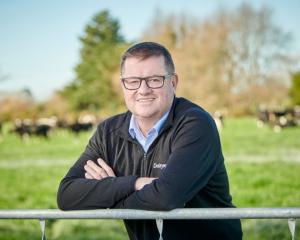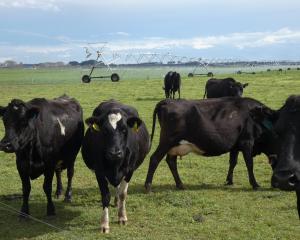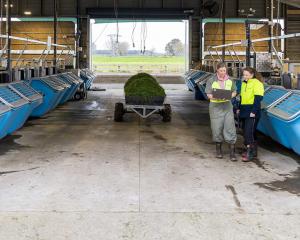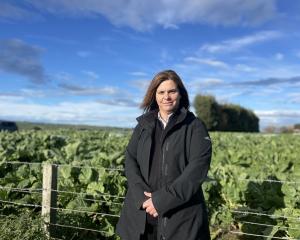

DuoReges co-owner Justin Koenig said a Redpath sawdust barn allowed more than 1000 cows to remain on his 800ha dairy farm in Kapuka, about 20km east of Invercargill.
He and his wife Cheryl Koenig and business partner Jan Marten Kingma own the dairy farm business and are in their 17th season.
The cows live in the barn, under its plastic roof, between May 25 and mid-August.
Several reasons spurred the decision to build the barn in 2007.
A reason was winter crops on the farm had performed poorly with low yields.
Consequently, a lot of baleage was required.
Environmental concerns could be curbed by the barn including winter grazing’s impact on nitrogen leaching and soil damage and compaction.
"Our soil structure doesn’t suit winter grazing down here."
A barn provides a pad for calving, which starts on August 3.
Other valuable features of a barn was it provided a feeding pad and stand-off pad.
"If we have a crap autumn or spring evening they can all get stood off in here overnight.
"This does everything for us," he said, speaking to a group of about 60 people at a DairyNZ event last week.
In the barn, the cows were fed silage once a day.
After the barn was built the cows were fed too much and got fat.
When the body fat reserves of a cow was above a condition score of five, it could create metabolic problems, causing cows to go down, which put staff "on edge".
The overfeeding of cows could easily happen in a barn.
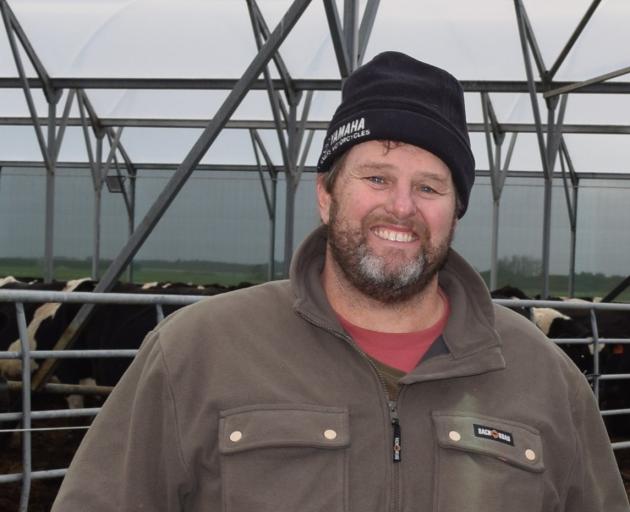
"Don’t get them fat and it is easy to do it."
On average, each cow was fed about 10kg of silage a day.
He recommended getting scales on his silage wagon, which they now used.
"That’s why we had fat cows in the beginning — it makes you manage your feed a lot better."
Ensuring skinny cows were given more feed was as important as ensuring cows were not overfed.
"The rising 3-year-old cows are always our challenge — they are usually the ones who need to get dried off earlier and fed a bit more."
The sawdust used as bedding material was not composted, but he was intrigued by the concept and would look into introducing it.
However, composting would require his staff to do more work, which he was not a fan of.
"Everything revolves around the team, and if you’re doing a job for the sake of it, I’d rather my guys going home earlier or have a longer lunch."

The muck would be pushed into a sludge bed and be spread on paddocks in a spell of good weather from November.
"We try and get it out as soon as possible so everything can dry out and breath."
He moved from Morrinsville in the Waikato to the farm in Kapuka as a 50:50 sharemilker in 2007.
"I’m not a farmer, I’m a plumber, but I tried to come down here and milk some cows."
A dream of building a barn began after arriving in Southland and seeing "horizontal rain".
The design of the barn took about three years, he said.
A discovery of a spring on the site increased the cost of the groundwork to about $440,000, about $40,000 over the budget for that part of the project.
The cost of the shed was cheaper than the cost of the ground work or the cost of the concrete, he said.
Every other part of the project came in on budget.

The farm had two milking sheds, a herringbone and a rotary, where on average each cow produced 540kg of milk solids last season.
"The per-cow production has gone up and I know it has something to do with this shed."
He employed 11 staff, who preferred working in a barn than outside on a winter morning.
"The guys don’t need to put their wet-weather gear on.
"They come down in their gumboots holding a cup of coffee."
He felt content working in the barn.
"When you come in and see the cows lying down and chewing on their cud — it is quite a peaceful place to be."
Details
Redpath sawdust barn with plastic roof.
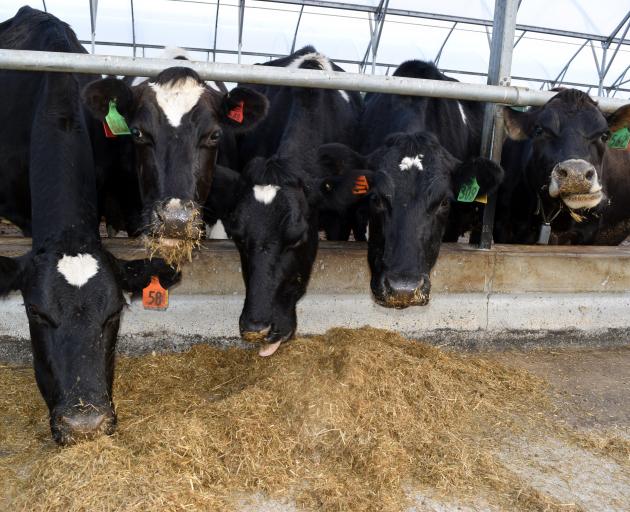
Built: 2017.
Bedding material: 250mm sawdust on top of 250mm of mixed bark shreds.
Project manager: Justin Koenig.
Site work layout: True South.
Site work contractors: Shane Wilson.
Concrete and block work: Milne Contracting.
Consents: Kate Scott, of Landpro.
Redpath build: Rodney Dyake.










